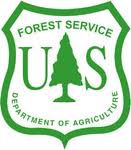Posted by: John_Hamilton on 12/21/2012 11:53 AM
Updated by: John_Hamilton on 12/21/2012 11:55 AM
Expires: 01/01/2017 12:00 AM
:

Amador Calaveras Consensus Group (ACCG) projects: 2012 Report Provides Good News from U.S.D.A. Forest Service
DECEMBER 21, 2012 (Amador and Calaveras Counties, Calif.) — A national report released Wednesday highlighted 2012 results from the ACCG Cornerstone projects in the Stanislaus and Eldorado National Forests. The projects are part of a larger national program, called Collaborative Forest Landscape Restoration, which works to restore forests for people, water, and wildlife...

The ACCG Cornerstone Project is one of 23 national projects that split $40 million in 2012. According to the fiscal year-end report for the project, the two forests spent more than $658,000 in CFLRA funds this year, matched by more than $433,000 of other Forest Service funds. There was more than $67,700 in ACCG in-kind partner contributions and more than $1 million in leverage funds from ACCG members. Additional funds included a $196,000 grant from the Coca-Cola Company as well as $283,000 worth of in-service work under stewardship contracts.
Among the ACCG Cornerstone project accomplishments in 2012 were:
• Treated 678 acres of hazardous fuels, 558 acres of which were within the wildland-urban interface (with homes nearby)
• Improved vegetation on more than 1,347 acres
• Managed noxious weeds and invasive plants on 163 acres
• Protected or improved more than 740 acres of water or soil resources
• Restored or enhanced 4.2 miles of stream habitat
• Improved rangeland vegetation on more than 212 acres
• Supported 31.1 direct and 47.2 total part-time and full-time jobs
• Provided direct labor income of more than $1.2 million and total labor income of more than $1.9 million
• Hired and trained a timber marking crew that can work on projects in the future
“The ACCG Cornerstone Project partners have a lot to be proud of,” said Calaveras District Ranger Teresa McClung. “It’s one of those rare win-win-win efforts, with a broad coalition of partners pulling together to accomplish real benefits for people, forests, water, and wildlife. We’re looking forward to getting even more done in the coming years.”
“Through the ACCG Cornerstone Project we are helping to support business in our community by putting people to work providing marketable wood for manufacturing and bioenergy,” said Robert Smith, manager of Smith Grinding Company. Smith Grinding Company is the first woman-owned small business to partner with ACCG and works with the local Amador-Calaveras Biomass Utilization contracting group. In addition to mastication work on fire breaks Smith, through association with Calaveras Healthy Impact Product Solutions (CHIPS) and the Mother Lode Job Training organization, conducted hand clearing of brush and the removal of small diameter trees in forest restoration work.
The ACCG Cornerstone Project was originally chosen for investment by a federally charted 15-member advisory panel to reduce the risk of uncharacteristic fire and threat of wildland fire to lives and property; restore forests, watersheds, meadows and streams to a healthy condition; create more-resilient forest conditions; restore cultural sites; protect municipal water supply; create sustainable local jobs and improved social conditions; and reduce wildfire suppression costs. Project activities include thinning, controlled burns, cultural site restoration, stream and meadow restoration and other restoration work. Selected projects will look to receive funding until 2019, provided funding is included in the President’s Budget and appropriated in Congress each year.
“For too long, conservation groups, loggers and community organizations worked independently on local forest issues, and at times, conflict got in the way of good work on the ground. Now we’re seeing what working together can do for our local economy and communities as well as the forest, wildlife and water.” said Katherine K. Evatt, President of Foothill Conservancy.
The ACCG is a diverse, collaborative community organization that works to create fire-safe communities, healthy forests and watersheds, and sustainable local economies in Amador and Calaveras counties. Members include state, federal and local agencies; local businesses; conservation groups; job-training and social service agencies; and others with an interest in forests, economic and community development in the area.
“There are 42 different partners in the ACCG, including local businesses, community organizations and government agencies collaborating to achieve important landscape restoration work here. This was a good year, but you ain’t seen nothin’ yet! Wait until next year, things will be even better,” said Calaveras County District 2 Supervisor Steve Wilensky.
The Collaborative Forest Landscape Restoration Program (CFLR) was created by Congress in 2009 to foster collaborative, science-based restoration in National Forests around the country.
As identified in the 2012 report, the 23 CFLR sites across the country cumulatively:
• Created and maintained 1,550 jobs;
• Produced 107 million board feet of timber;
• Generated nearly $59 million of labor income;
• Removed fuel for destructive mega-fires on 90,000 acres near communities;
• Reduced mega-fire on an additional 64,000 acres;
• Improved 66,000 acres of wildlife habitat;
• Restored 28 miles of fish habitat;
• Enhanced clean water supplies by remediating 163 miles of eroding roads.
The annual report was produced by the CFLR Coalition, which is made up of 145 member organizations that includes private businesses, communities, counties, tribes, water suppliers, associations, and non-governmental organizations.
Copies of the 2012 CFLR Annual Report can be requested from Jon Schwedler of the CFLR Coalition at jschwedler@tnc.org. Information on CFLR can be found at the U.S. Forest Service’s website: http://www.fs.fed.us/restoration/CFLR/
|

